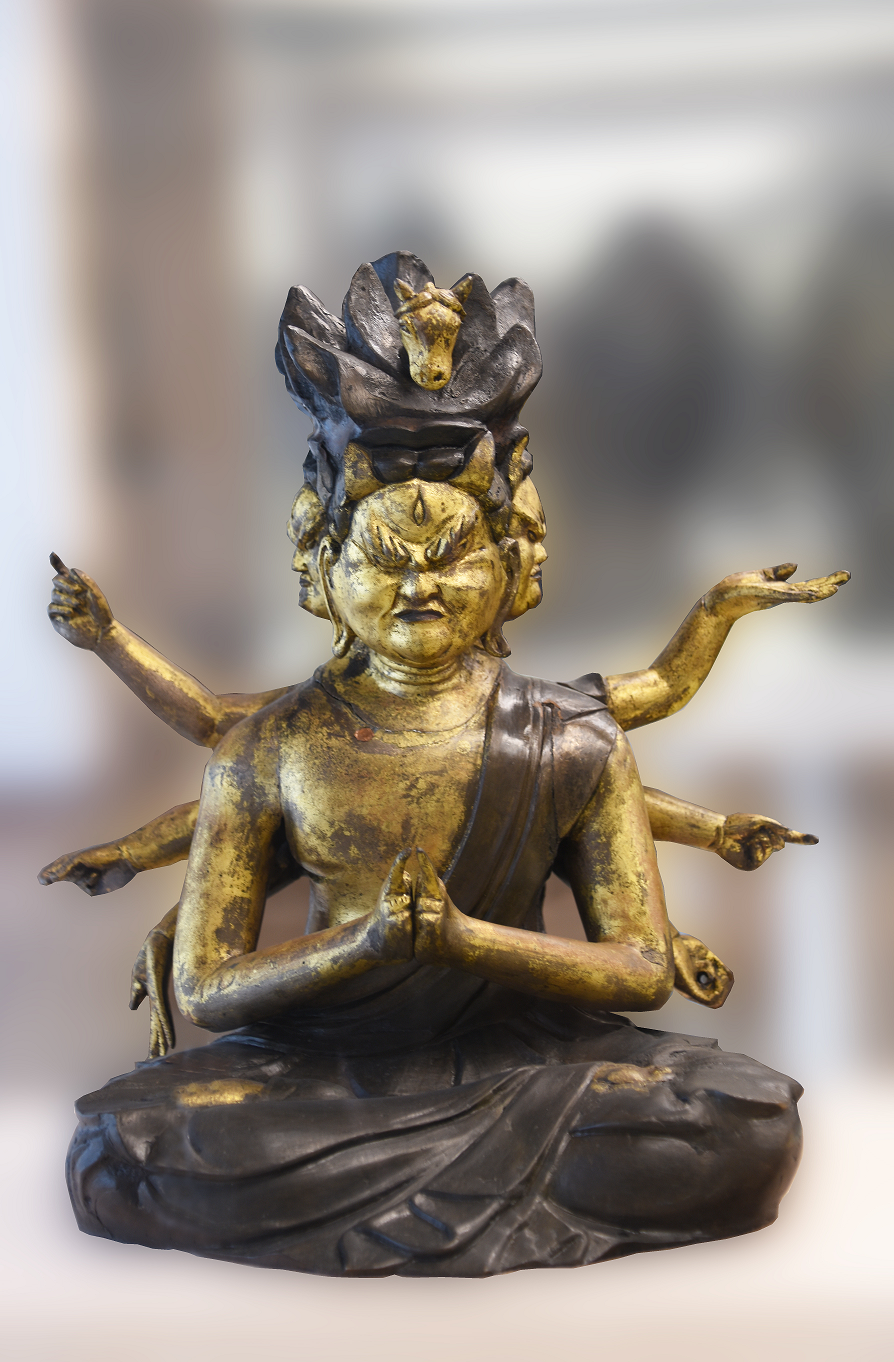
Click here to view image
Japan, mid-late Edo period (1673-1800
cast bronze, patinated and gilded, height 27,1 cm
Gallery I, display case 5 (inv. no. 1218)
Edoardo Chiossone Collection, testamentary bequest, 1898
figurine
The horse-headed bodhisattva Batō Kannon is usually represented as a benevolent deity, but in this piece he’s portrayed with an irate look: he has three furious faces all of them with a third eye on the front. Between his hair and locks we see a horse head, which explains his name, Batō meaning horse. Batō Kannon is seated in the lotus position (regenza) and he has eight arms, the two hands on the front are in the mushofushi-in o mudrā of omnipresence. The attributes that Batō Kannon usually holds in the other six hands, the sword, wheel, sceptre and vajra are unfortunately missing.
Batō Kannon was usually prayed by the farmers as protector of horses and cattle, being one deity of the esoteric Buddhism (mikkyo), the last of three main schools which follows the teachings of the Mahayana, introduced in Japan in the early 9th century.
On the back of the figurine we found an inscription in red ink that says Batō Kanzeon, where Kanzeon is another Japanese name for Kannon which translate “the one who observes the world listening for the sounds of suffering”.



